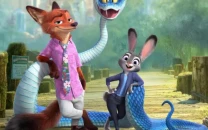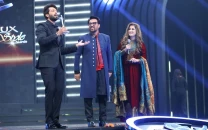How 'The Kashmir Files' single-handedly fuelled rage against Muslims
The film, laced heavily with the anti-Muslim sentiment, has garnered attention from critics, politicians

The controversial Kashmir Files, laced heavily with the anti-Muslim sentiment, has warranted attention from critics and politicians as they voice their condemnation and air their concerns in the wake of the film’s plot, which is thick with right-wing radical patriotism.
In an exclusive for The New York Times, investigative journalist Suhasini Raj explores the impact and divide of the film’s success. She begins by introducing readers to the film’s opening scene of a friendly cricket match between young children of both religious groups and the dark turn of events that follow.
Of this Raj writes, “This opening scene sets the tone for The Kashmir Files, a film that has become an unexpected blockbuster, drawing millions of moviegoers across India and the support of Prime Minister Narendra Modi’s Bharatiya Janata Party, or BJP.”
Modi and BJP have continued to heavily express anti-Muslim sentiment and propagate hate culture in India, inciting acts of unnecessary violence. The cinematic release of Kashmir Files has only added fuel to Modi’s raging fire. Raj notes in her account,
“It has been seized on by the BJP as a tool to advance its narrative of Hindu persecution in India, at a time of increasing calls for violence against India’s minority Muslims.”
Advertently, the film became a marketing prop that promotes the vile extremist foundation of the political party.
The film was released in March of this year and is set in the late 1980s and early 1990s. The story is concocted from the interviews conducted by director Vivek Agnihotri that forms the basis of this fictional drama. The interviews are of first-generation victims of the alleged Kashmir Genocide of the Pandit Community of 1990. It is important to note that the ethnic cleansing that took place indeed saw lives lost in the region; however, it is vital to point out that the numbers pale in comparison to the 1947 Jammu massacre that tallied at over 200,000 Muslims murdered in cold blood.
Raj goes on to share the shocking response Modi’s political allies, activists, including his government have had toward the film. She writes, “Bharatiya Janata Party workers are encouraging members and supporters to attend, the cast and crew are doing photo ops with Mr. Modi and some states governed by the party have been offering tax breaks on ticket sales and days off from work to spur attendance.”
In the age of social media, a photo op is hardly a naïve move. Reaffirming this move from the BJP, Gurav Tiwari, a party member is quoted by Raj as stating, “This movie is special because before now, the actual cruelty suffered by Kashmiri Pandits had never been told in this unadulterated manner.”
The deep divide of the film is further explored in Raj’s article as she highlights in her story the views of Mohammad Ayub Chapri, a taxi driver from Srinagar.
“It makes me sad to know this,” Chapri said of the film, despite not having access to view the movie since cinemas have been shut down in Kashmir. He goes on to say, “We Muslims have shared meals with the Pandits, eating from the same plate. Even Muslims were killed by the radicals, but the movie seems to paint all Muslims here with the same brush.”
Director Agnihotri said his aim was to shed light on horrors inflicted on Pandits and his continued disagreement with left wing scholars, intellectuals and writers who were “complicit in covering up that history.” Raj then quotes the director and author as follows, “All I am saying is acknowledge that genocide happened so that nobody repeats it against Hindus or Muslims or Buddhists or Christian.”
An ironic statement has given the surge in hate crimes and violence against religious minorities of India.
His portrayal of the events has incited praise from within the film fraternity as well by the likes of award-winning director and producer Ram Gopal Varma, who took to Twitter to share the film “will inspire a new breed of revolutionary filmmakers.”
Whether the film does or does not “inspire” filmmakers is to be seen.



















COMMENTS
Comments are moderated and generally will be posted if they are on-topic and not abusive.
For more information, please see our Comments FAQ